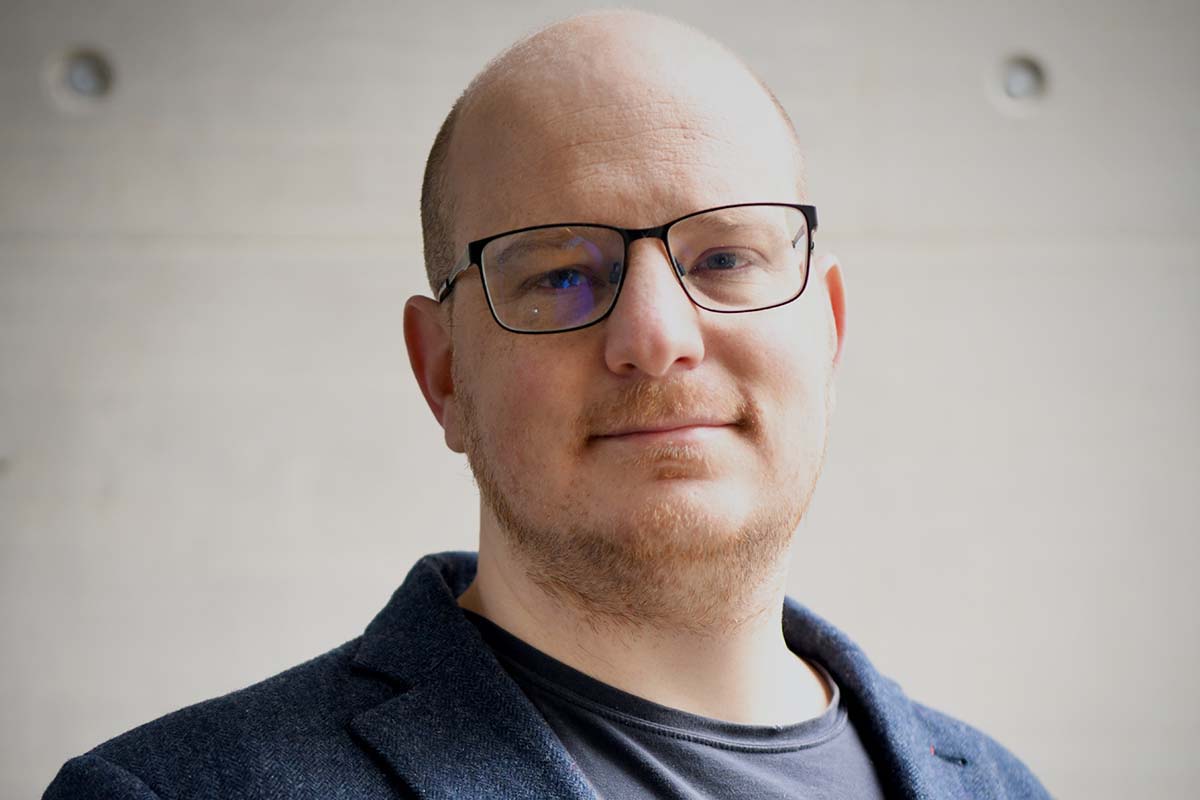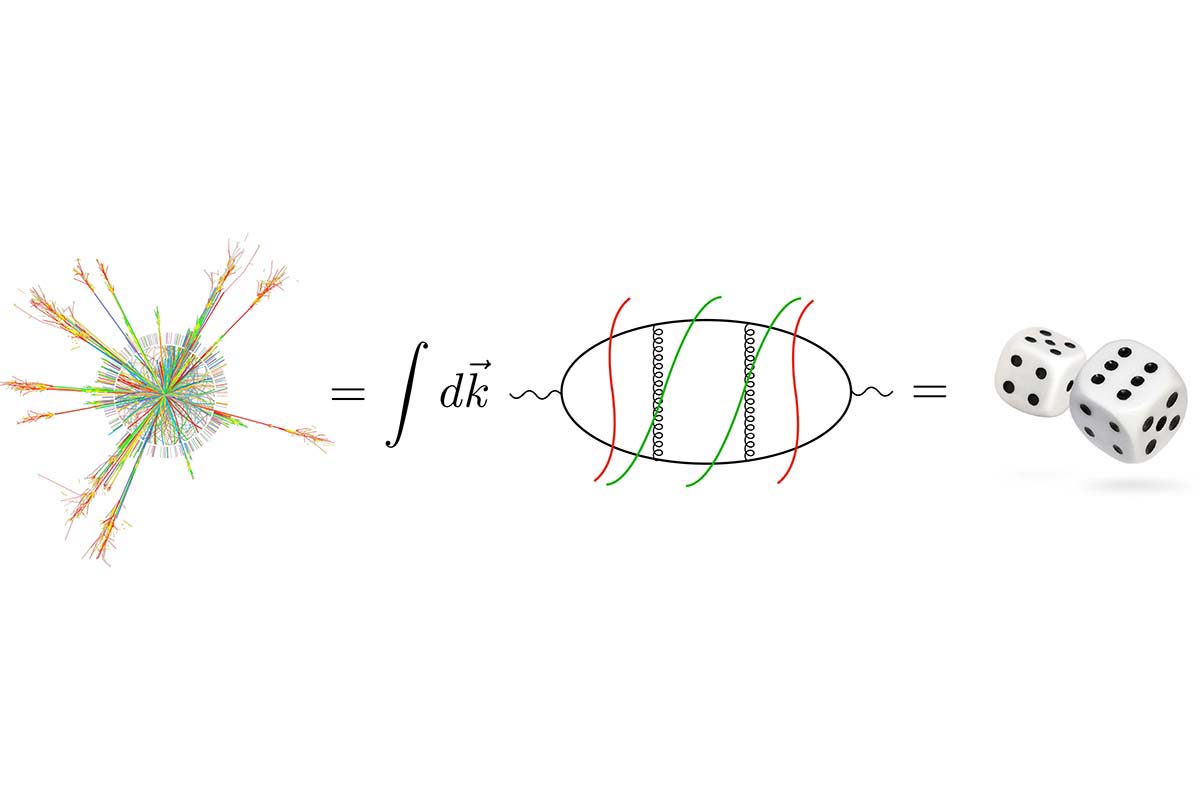When "God plays dice", he does not roll infinity
Physicist Valentin Hirschi's research explores a new approach to quantum field theory calculations. More accurate predictions for experiments at the Large Hadron Collider at CERN should help to better understand the inner workings of the universe.
The funding instruments Eccellenza and PRIMA of the Swiss National Science Foundation SNSF enable highly qualified researchers to implement their projects within the framework of an assistant professorship at a Swiss university. In a series of interviews, we present six newly awarded researchers and their projects.

You have received an "Eccellenza Professorial Fellowship" from the Swiss National Science Foundation SNSF. What does it mean to you to receive this Fellowship?
First and foremost, it is a testimony of the trust that the community placed in my research, for which I am grateful.
It will also allow me to build a team which is necessary to realize the full potential of my project. I look forward to coordinating this effort by training a new generation of practitioners and instilling in them my views on High Energy Physics in general, and its computational aspects in particular. Fundamental theories of physics have become increasingly abstract over time, and I believe that their deep understanding is intimately related to one’s ability to compute, often quantitatively, their logical implications.
You have been selected from the SNF for your research project "A novel approach to perturbative computations in Quantum Field Theory". What is the project about?
When we think of predicting how a billiard ball goes from point A to B on the table, we only think of its straight, or so-called classical path. On the contrary, when particles move and collide, we must sum probabilities of following all possible paths. The paths that are not straight contribute less, but they do contribute nonetheless!
In our continuous space-time, this sum takes the form of an integral. In traditional approaches, these integrals are split into parts that evaluate to infinity. Over the last half century, mathematicians and physicists have been working to find ways to formally characterize and regulate these infinities - with the goal to properly realize their cancellation when all the parts of the computation are put back together.
My research proposes an alternative formulation, called "Local Unitarity", that avoids this separation and keeps each term manifestly finite. This offers practical advantages when it comes to the numerical evaluation of these integrals. Perhaps more importantly however, it also provides new theoretical insights on why when "God plays dice", he never seems to roll infinity. In other words, my research allows one to better understand how quantum field theories give finite predictions.

What made you chose the University of Bern for your Project?
Simulations of collider experiments require expertise in a multitude of aspects of Quantum Field Theory, relevant to different energy regimes.
My research tackles only a part of it, which I hope to integrate into the overall paradigm thanks in part to collaborations with the numerous experts at the Institute of Theoretical Physics of the University of. Bern.
The central location of the University of Bern and its proximity to CERN also makes it an ideal setting for my activities.
What is the social relevance of your project?
Aristotle believed that heavier objects fall faster than lighter ones. Instead, Galileo understood that objects on earth are subject to a uniform downward acceleration. Imagine that the two meet and devise an experiment to verify their claim, where they carefully measure the time for a toothpick to fall from a height of 5 meters and find it takes 1.1 second.
Air resistance is non-negligible and difficult to compute so that Galileo’s hypothetical calculations predict that the toothpick will fall in 1.2±0.12 second - so 10% uncertainty - whereas Aristotle predicts 1 second only, but with the same uncertainty.
That’s a tie! Because of the uncertainty plaguing their predictions, the experiment is inconclusive.
Experiments at the Large Hadron Collider at CERN are similar, insofar as predictions for what is being observed must be precise enough in order to be able to tell apart different theories of fundamental physics. My research proposes a novel way of carrying out the very complicated Quantum Field Theory calculations underlying these predictions to improve on their precision and improve our odds of further understanding the inner workings of the universe.
About Valentin Hirschi
Prof. Dr. Valentin Hirschi obtained his PhD in physics 2013 at EPFL. He then did a first postdoc at SLAC (2013-2017), a US national laboratory hosted by Stanford University. His second postdoc took place at ETH Zürich (2017-2020), before starting in October of 2020 with his current position as Senior Fellow at the Theory Department of CERN. Prof. Hirschi is interested in numerical methods in computational physics and perturbative Quantum Field Theory for applications to collider simulations.
SNSF Eccellenza Professorial Fellowships
SNSF Eccellenza Professorial Fellowships are aimed at highly qualified researchers who aspire to a permanent professorship. Eccellenza supports them in achieving their goal by allowing them to lead a generously funded research project as an assistant professor with their team at a Swiss higher education institution. Eccellenza covers the grantee's salary at the local rates applicable to assistant professorships and project funds of up to 1,000,000 Swiss francs for a five-year period. In 2021, the Eccellenza program selected four researchers at the University of Bern.
SNSF PRIMA
PRIMA grants are aimed at excellent women researchers who show a high potential for obtaining a professorship. PRIMA grantees conduct an independent research project with their own team at least at the group leader level within a Swiss research institution. PRIMA grants cover the grantee's salary and project costs for a five-year period. With this competitive grant, PRIMA grantees can carve out a name for themselves and take the next step up the academic career ladder: a professorship. If a PRIMA grantee is appointed as a professor in Switzerland during the funding period, the remaining amount of the PRIMA grant will be transferred to the new place of work as research funds. In 2021, the PRIMA program selected two researchers at the University of Bern.
About the author
Maura Widmer is an intern at the Communication & Marketing Department of the University of Bern.